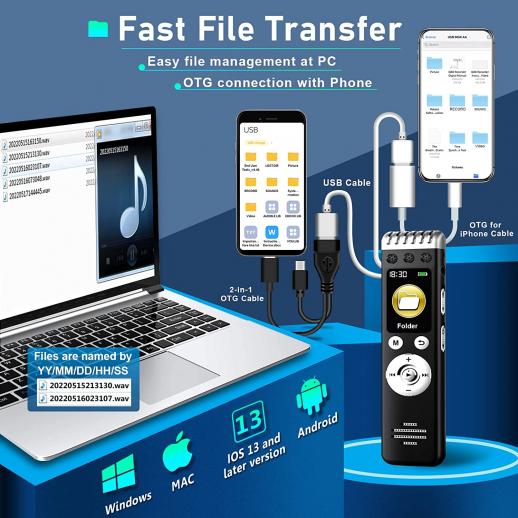How To Record Audio In Ipad?
Recording audio on an iPad can be a straightforward process, but it can also be as complex as you need it to be, depending on your requirements. Whether you are a student needing to record lectures, a musician capturing song ideas, a journalist conducting interviews, or a podcaster creating content, the iPad offers a variety of tools and applications to meet your needs. In this article, we will explore the different methods and applications available for recording audio on an iPad, providing you with a comprehensive guide to get the best results.

Built-in Apps for Audio Recording
Voice Memos
The simplest way to record audio on an iPad is by using the built-in Voice Memos app. This app is pre-installed on all iPads and offers a user-friendly interface for quick and easy recordings.
How to Use Voice Memos:
1. Open the Voice Memos app.
2. Tap the red record button to start recording.
3. Tap the stop button to end the recording.
4. You can rename, edit, and share your recordings directly from the app.
Voice Memos is ideal for basic recording needs such as capturing lectures, meetings, or personal notes. However, it lacks advanced features like multi-track recording and audio effects.
Third-Party Apps for Advanced Recording
For more advanced audio recording needs, several third-party apps offer enhanced features and capabilities.
GarageBand
GarageBand is a powerful digital audio workstation (DAW) available for free on the App Store. It is perfect for musicians and podcasters who need more control over their recordings.
How to Use GarageBand:
1. Download and install GarageBand from the App Store.
2. Open the app and create a new project.
3. Select the type of track you want to record (e.g., audio recorder, guitar, keyboard).
4. Tap the record button to start recording.
5. Use the editing tools to trim, loop, and add effects to your recording.
6. Export your project in various formats.
GarageBand supports multi-track recording, virtual instruments, and a wide range of audio effects, making it a versatile tool for complex audio projects.
Ferrite Recording Studio
Ferrite Recording Studio is another excellent app for professional audio recording and editing. It is particularly popular among podcasters and journalists.
How to Use Ferrite Recording Studio:
1. Download and install Ferrite Recording Studio from the App Store.
2. Open the app and create a new project.
3. Tap the record button to start recording.
4. Use the editing tools to cut, fade, and add effects to your recording.
5. Export your project in various formats.
Ferrite offers features like multi-track recording, noise reduction, and advanced editing tools, making it a robust option for high-quality audio production.
External Microphones for Better Audio Quality
While the built-in microphone on the iPad is sufficient for basic recordings, using an external microphone can significantly improve audio quality. Here are some popular options:
USB Microphones
USB microphones are easy to use and offer excellent sound quality. Popular models include the Blue Yeti and the Audio-Technica ATR2100x-USB. To use a USB microphone with your iPad, you will need a USB to Lightning adapter.
How to Connect a USB Microphone:
1. Connect the USB microphone to the USB to Lightning adapter.
2. Plug the adapter into the iPad’s Lightning port.
3. Open your preferred recording app and select the USB microphone as the input source.
Lavalier Microphones
Lavalier microphones, also known as lapel mics, are small and discreet, making them ideal for interviews and presentations. Popular models include the Rode SmartLav+ and the Shure MVL.
How to Use a Lavalier Microphone:
1. Plug the lavalier microphone into the iPad’s headphone jack or Lightning port (using an adapter if necessary).
2. Open your preferred recording app and select the lavalier microphone as the input source.
XLR Microphones
For the highest audio quality, XLR microphones are the preferred choice among professionals. Models like the Shure SM7B and the Rode NT1-A are widely used in studios. To use an XLR microphone with your iPad, you will need an audio interface.
How to Connect an XLR Microphone:
1. Connect the XLR microphone to the audio interface using an XLR cable.
2. Connect the audio interface to the iPad using a USB to Lightning adapter.
3. Open your preferred recording app and select the audio interface as the input source.
Tips for High-Quality Audio Recording
Regardless of the method or equipment you use, following these tips can help you achieve the best possible audio quality:
1. Choose a Quiet Environment: Background noise can ruin an otherwise good recording. Choose a quiet location and minimize ambient noise as much as possible.
2. Use a Pop Filter: A pop filter can reduce plosive sounds (like "p" and "b" sounds) that can cause distortion in your recording.
3. Monitor Your Audio Levels: Keep an eye on your audio levels to avoid clipping and distortion. Most recording apps have level meters to help you with this.
4. Use Headphones: Using headphones while recording can help you monitor the audio in real-time and catch any issues early.
5. Edit and Enhance: Use the editing tools available in your recording app to trim, enhance, and add effects to your recording for a polished final product.
Recording audio on an iPad is a versatile and accessible process, thanks to the variety of built-in and third-party apps available. Whether you need a simple voice memo or a multi-track recording with professional-grade audio quality, the iPad can meet your needs. By choosing the right app and equipment, and following best practices for audio recording, you can achieve excellent results for any project. Whether you are a student, musician, journalist, or podcaster, the iPad offers a powerful platform for capturing high-quality audio.

There are no comments for this blog.